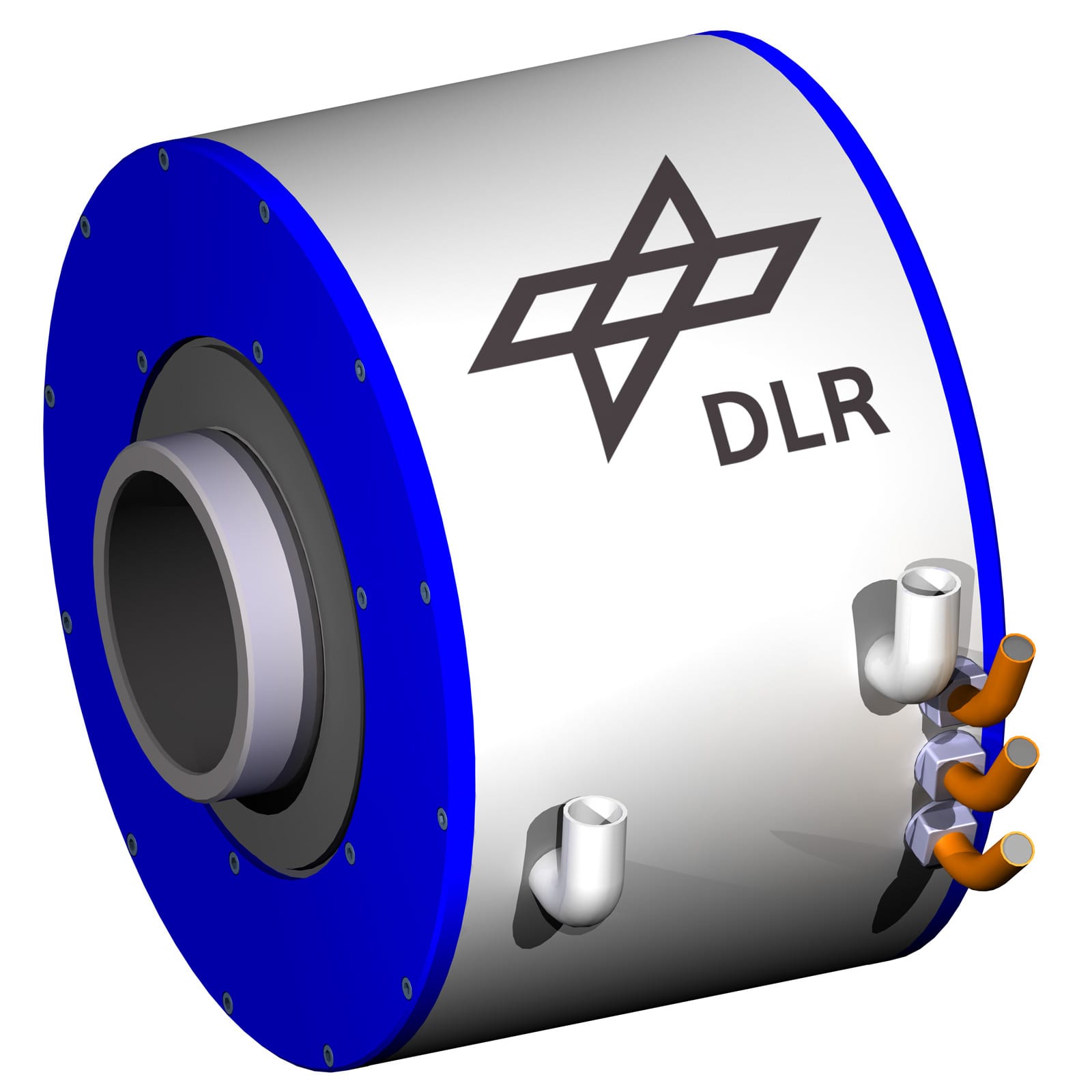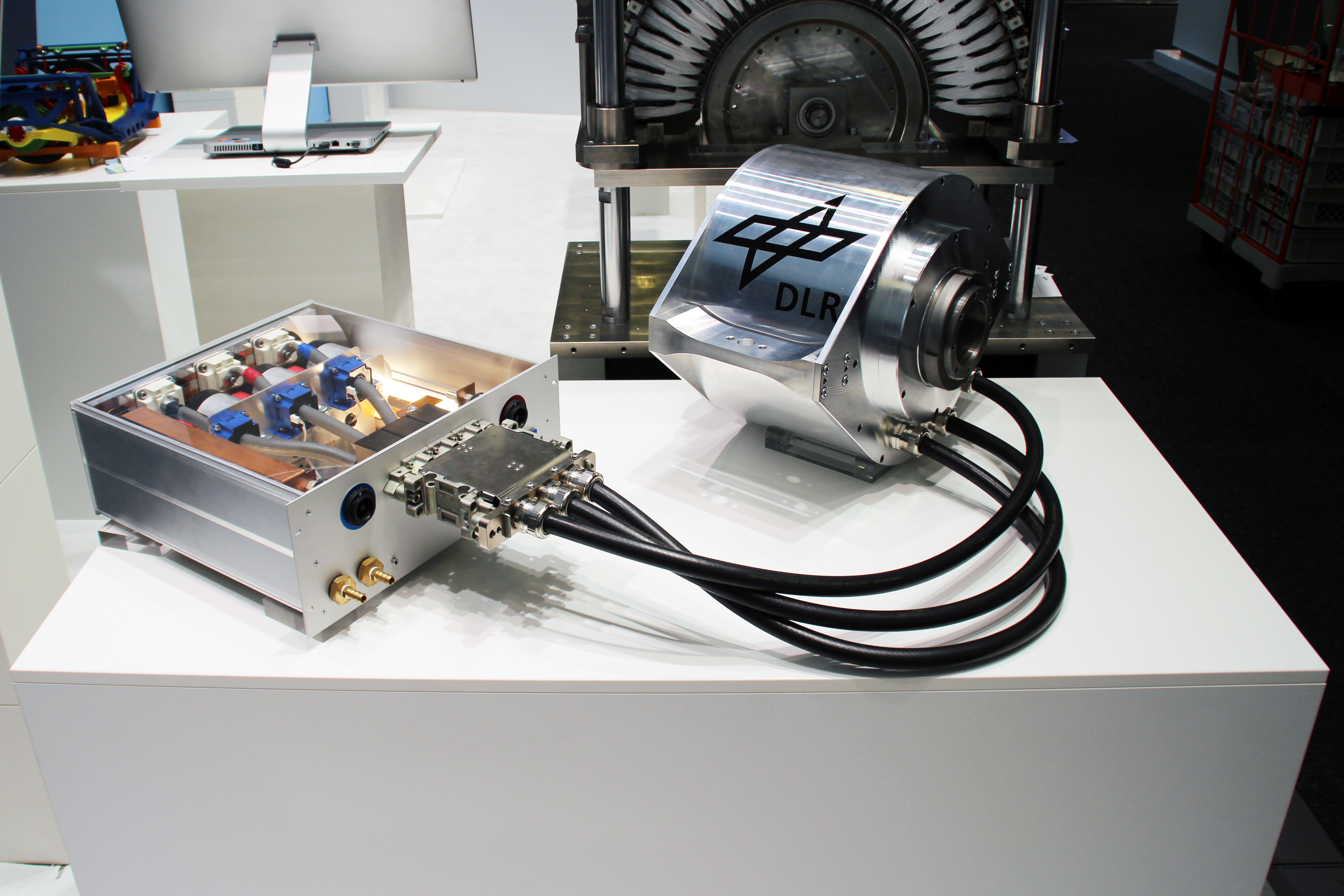The NGT HST’s space optimized direct drive
The German Aerospace Center develops forward-looking drive topologies for the high speed railcar train NGT HST. The research aims for a further increase of the power density of traction motors in high speed train applications by bringing new technologies into application.
The NGT HST is a high speed railcar train consisting of eight middle coaches and two end wagons. It has a total length of 202 meters and offers space for 790 passengers. The middle coaches are equipped with independent wheels, a concept that makes a common shaft obsolete and offers more space for passengers. The NGT HST’s drive power is approximately 16 megawatts of which the middle coaches deliver about 8 megawatts.

In order to minimize the installation space of the drive, the motors are placed next to the wheel and do not use a gearbox. Two concepts are being considered: on the one hand, the motors hollow shaft is directly coupled to the wheel shaft by an interference fit. Alternatively, a partly suspended variant is examined, in which the motors hollow shaft is connected to the wheel using a coupling. In both cases the motor housing is supported against the coach body (torque support). Handling the loads caused by the traction torque and the shocks from the wheel is a special challenge within the project.
With the given installation space for the motors of the middle coaches, the requested torque density can’t be accomplished with conventional traction motors with a low number of poles.

